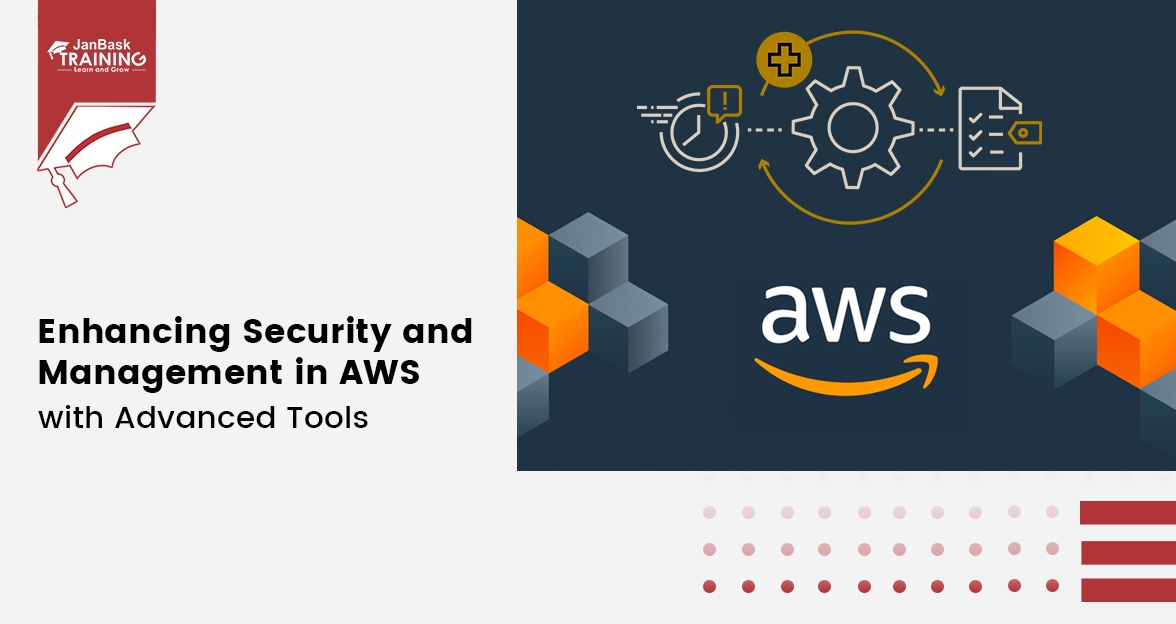Grab Deal : Flat 30% off on live classes + 2 free self-paced courses - SCHEDULE CALL
In today's data-driven world, corps are increasingly acknowledging the significance of harnessing the full potential of data to gain valuable insights and drive informed decision-making. Building solid and secure data storage is a crucial component in this process. This blog post will explore how AWS storage services and aws databases can seamlessly integrate aws cloud migration and aws analytics tools to create a robust data management ecosystem. We will also explore the benefits of data storage for data preprocessing.
AWS provides various cloud storage on aws options tailored to business needs. Each service has unique features and uses cases, from object-based storage like Amazon S3 (Simple Storage Service in AWS) to block-level storage such as Elastic Block Store (EBS).
1. Amazon S3: The Foundation for Scalable Object Storage
Amazon S3 is an industry-leading object cloud storage on aws service that allows businesses to store vast amounts of unstructured data in a highly scalable manner. With its durability guarantees and flexible access controls, it serves as the backbone for various applications ranging from backup repositories to content delivery networks.
2. Elastic Block Store (EBS): High-Performance Block-Level Storage
For workloads requiring low-latency access or persistent block-level storage volumes attached directly to EC2 instances, EBS is the solution within AWS infrastructure. It offers high-performance SSD-backed volumes with customizable performance characteristics based on specific application requirements.
To complement its extensive cloud storage on aws offerings, AWS also provides managed Amazon AWS database services designed for scalability, reliability, and ease of use.
1. Amazon RDS: Simplifying Relational Database Management
Amazon RDS (Relational Database Services) is a powerful tool for businesses that need to manage relational databases on aws without the hassle of infrastructure maintenance tasks. With Amazon RDS, users can easily configure fully managed databases using popular engines like MySQL, PostgreSQL, Oracle, and SQL Server.One of the key benefits of Amazon RDS is that it eliminates the need for businesses to worry about backups or software patching. These tasks are taken care of automatically by AWS, allowing users to focus on their core business operations instead of managing infrastructure.
For example, a company must create a MySQL database for its e-commerce website. Instead of purchasing hardware and setting up servers manually, they can simply use Amazon RDS to create an instance with just a few clicks. AWS will provision the underlying infrastructure, and all maintenance tasks will be handled automatically.Another advantage of using Amazon RDS is scalability. As your business grows and requires more storage or processing power for your aws database, you can quickly scale up your resources with minimal downtime. This allows you to meet increasing demands without interrupting service availability.
2. Amazon DynamoDB: NoSQL Database for Fast and Predictable Performance
DynamoDB is a fully managed NoSQL database service offered by AWS that provides fast and predictable performance at any scale. It is designed to handle large amounts of data while maintaining low latency response times in single-digit milliseconds.The flexible data model provided by DynamoDB allows businesses to store semi-structured or unstructured data effortlessly. This means you don't have to define rigid schemas upfront like in traditional relational aws databases - you can simply insert new attributes without worrying about altering existing records.
This flexibility makes DynamoDB ideal for applications where the data structure may change frequently or when dealing with large quantities of diverse data types such as user-generated content, sensor data, or social media feeds.Additionally, DynamoDB offers automatic scaling capabilities. As the workload on your database increases or decreases, DynamoDB can automatically adjust its capacity to meet demand. This eliminates the need for manual provisioning and ensures that you only pay for the resources you use.Furthermore, DynamoDB has built-in security features such as rest and transit encryption. This ensures that your data is protected from unauthorized access and provides peace of mind when dealing with sensitive information.
For example, a gaming company could leverage DynamoDB to store user profiles and game progress. As new games are released, and more players join their platform, they can rely on DynamoDB's scalability to handle increased traffic without compromising performance.
It offers several aws cloud migration services that facilitate the smooth transition of existing workloads to its cloud infrastructure.
1. AWS Database Migration Service (DMS): Simplifying Database Migration
With DMS, organizations can migrate their aws databases with minimal downtime and disruption. The service supports both homogenous (e.g., Oracle to Oracle) and heterogeneous (e.g., Microsoft SQL Server to Amazon Aurora) aws migrations while ensuring data integrity.

AWS EMR (Elastic MapReduce) is a cloud-based big data processing service offered by Amazon Web Services. It allows users to process large amounts of data using popular frameworks such as Apache Hadoop, Apache Spark, and Presto. EMR provides a managed environment for running these frameworks, eliminating the need to set up and manage infrastructure.EMR can be used for various use cases like log analysis, data warehousing, machine learning, fraud detection, and genomic research. It enables businesses to perform complex analytical tasks on vast amounts of data cost-effectively.
For example, a company wants to analyze its web server logs to gain insights into user behavior patterns. They can use EMR with Apache Spark to process the raw log files in Amazon S3. By leveraging the distributed computing power provided by EMR clusters, they can quickly extract valuable information from terabytes or petabytes of log data.
Amazon Athena is an interactive query service that allows users to analyze their data directly in Amazon S3 using standard SQL queries without requiring any infrastructure setup or management overheads. Athena supports various file formats like CSV, JSON, Parquet, and Avro, making it easy to work with different types of datasets stored in S3.For instance, consider a scenario where an e-commerce company wants to analyze customer purchase history stored as CSV files in S3. Using Amazon Athena's SQL interface and simple query syntaxes like SELECT and JOIN operations, they can easily retrieve insights about customer buying habits or identify trends over time.Amazon Redshift is a fully managed cloud-based data warehouse service for online analytic processing (OLAP). It allows businesses to efficiently store and analyze massive amounts of structured or semi-structured data.An example use case could be an enterprise wanting to consolidate multiple sources of sales transactional databases on aws into one central repository for reporting purposes. With Redshift's columnar storage format optimized for analytical workloads and parallel query execution capabilities, businesses can quickly run complex queries on large datasets.Amazon CloudSearch is a scalable search service that provides full-text search capabilities over structured data. It simplifies setting up, managing, and scaling a search solution by overseeing infrastructure provisioning and maintenance tasks.
For example, an e-commerce website may want to implement a powerful search functionality for its product catalog. By using CloudSearch, they can easily create searchable indexes based on attributes like product name, description, category, or customer reviews. This lets users find relevant products quickly through keyword searches or advanced filtering options.
AWS Training For Administrators & Developers

Amazon Elasticsearch Service offers a fully managed Elasticsearch cluster deployment for real-time log aws analytics and full-text search use cases. Elasticsearch is an open-source distributed search engine built on top of Apache Lucene.One possible application could be in the field of monitoring system logs for anomalies or errors. By ingesting log files into Amazon Elasticsearch Service clusters, businesses can leverage its powerful querying capabilities to analyze real-time patterns and set up alerts based on specific criteria.Amazon Kinesis is a platform for streaming data ingestion and processing at scale. It enables developers to collect data from various sources like websites, mobile apps or IoT devices in real-time and quickly process it using AWS services such as Lambda functions or EMR clusters.
An example usage scenario could be a social media platform wanting to analyze user sentiment in real time by processing millions of tweets per second. With Kinesis Data Streams' ability to handle high throughput ingestions coupled with Kinesis Analytics' capability to perform continuous SQL queries on the stream data - businesses can gain valuable insights instantly without worrying about scalability issues.
AWS Data Pipeline is an orchestration service that helps users automate the movement and transformation of data between different AWS services and external systems. It provides pre-built connectors for popular AWS services like S3, DynamoDB, and Redshift and support for custom scripts and on-premises data sources.For instance, a company might have a workflow that involves extracting data from an on-premises database, transforming it using EMR clusters, and finally loading the processed data into Redshift for analysis. AWS Data Pipeline makes it easy to define and schedule these activities and handle error handling or retry logic if any failures occur.Amazon QuickSight is a cloud-based business intelligence service that allows users to create interactive dashboards, perform ad-hoc analysis, and share visualizations with others. It provides an intuitive interface for exploring data visually without requiring complex coding or query writing skills.
For example, suppose a marketing team wants to track key performance indicators (KPIs) like website traffic, conversion rates, or customer acquisition costs. They can use QuickSight's drag-and-drop interface to create dynamic charts or graphs based on real-time or historical data stored in services like Redshift or S3. This enables them to gain insights quickly and make informed decisions based on the visualized metrics.
AWS Glue is a fully managed extract-transform-load (ETL) service designed to automate large amounts of data preparation and loading for aws analytics purposes. It simplifies tasks such as discovering metadata about datasets, automatically generating ETL code for transformations, scheduling jobs at regular intervals, and managing dependencies between different steps in the pipeline.An illustrative example could be when an organization needs to periodically consolidate customer information from multiple databases on aws into one centralized repository. With AWS Glue's ability to crawl various sources like RDS instances or S3 buckets - businesses can easily discover schema details and build automated workflows that transform raw source data into clean formats suitable for storage in systems like Redshift or Athena.
We have explored how storage services in aws, such as Amazon S3 and Elastic Block Store, provide scalable options for storing different data types effectively within the cloud environment. We also discussed how Amazon AWS database services like Amazon RDS and DynamoDB simplify the management of relational and NoSQL databases, respectively.Furthermore, we explored how AWS migration services like Database Migration Service (DMS) enable a seamless transition to the cloud while ensuring data integrity.
Lastly, we touched upon powerful aws analytics tools like Amazon Redshift and Athena that help businesses unlock valuable insights from their stored data.By leveraging these AWS offerings, organizations can create a robust data management ecosystem that enables efficient storage, seamless aws cloud migration, and insightful data analytics in aws. Embracing the power of AWS storage, databases, aws migration tools, and data analytics in aws capabilities is key to staying ahead in today's data-centric world.

A Comprehensive Guide to Aws Global Infrastructure


Enhancing Security and Management in AWS with Advanced Tools

Cyber Security

QA

Salesforce

Business Analyst

MS SQL Server

Data Science

DevOps

Hadoop

Python

Artificial Intelligence

Machine Learning

Tableau
Download Syllabus
Get Complete Course Syllabus
Enroll For Demo Class
It will take less than a minute
Tutorials
Interviews
You must be logged in to post a comment